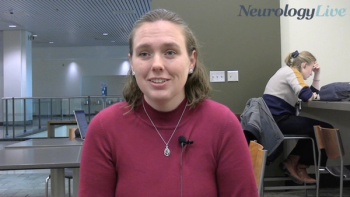
Physical Activity May Offset Cognitive Decline Risk in APOE ε4 Carriers, Study Finds
Key Takeaways
- APOE ε4 carriers face higher cognitive decline risk, but walking offers protective benefits, improving executive function and processing speed.
- The study found steeper cognitive declines in APOE ε4 carriers compared to ε3 carriers, irrespective of sex and race.
In a new study presented at AAIC 2025, findings showed that walking significantly slowed cognitive decline in APOE ε4 carriers, especially among Black and White women.
A newly presented study showed that apolipoprotein ε4 allele (APOE ε4) carriers had an increased risk of cognitive decline, yet higher levels of physical activity, particularly walking, were significantly protective, improving executive function and processing speed in White carriers and enhancing global cognition in Black carriers. These results highlight the need for customizing public messaging on physical activity for this vulnerable population at risk and underscore how genetic, sex, demographic, and lifestyle factors interact in the context of cognitive aging.1
Among 2984 patients categorized as ε2, ε3, or ε4 carriers, APOE ε4 carriers displayed steeper declines in both Digit Symbol Substitution Test (DSST) and Modified Mini-Mental State Examination (3MS) scores compared with ε3 carriers, regardless of sex and race (βs > -.07, all P <.034). Presented at the
Authors analyzed data from the Health, Aging, and Body Composition cohort, which comprised community-dwelling Black and White older adults followed for 10 years. Researchers assessed cognitive performance measured by DSST for executive functions/processing speed and the 3MS for global cognition. Authors noted that physical activity was measured using the self-reported annual walking time. The study used linear models and latent growth curve modeling to investigate the connections between APOE genotype, sex, race, and walking on cognitive trajectories with adjustments for study location, health score, age, education, and body mass index.
Presented by Cindy K. Barha, PhD, an assistant professor in the Department of Physical Therapy at the University of Calgary, walking demonstrated the strongest protective effect in ε4 carriers, slowing the decline in DSST among Black women (β = .39, P = .039), White women (β = .60, P = .008), and White men (β = .45, P = .009). In terms of 3MS, researchers noted that walking was associated with slower decline across ε4 carriers with slightly greater associations in Black patients (βs > 1.11, P <.001) compared with White patients (βs > .67, P <.031). In addition, researchers observed that walking was not associated with cognition decline among ε2 or ε3 carriers.
READ MORE:
In a similar study previously conducted by Barha and colleagues, results showed that the relationship between self-reported walking and cognitive performance was strongest among the parity groups of women at risk for cognitive decline and dementia, the nulliparous and grand multiparous patients.2 The study aimed to identify whether previous parity could moderate the relationship between physical activity and cognitive decline in older women, performing secondary analyses using data from the Health, Aging, and Body Composition Study.
Researchers in the prior study assessed whether the association between average physical activity over 10 years and cognition measured by 3MS and executive functioning measured by DSST over 10 years varied by previous parity including nulliparity, low parity, medium parity, and grand multiparity. Authors conducted analysis of covariance with cognition, average and change over 10 years, as the dependent variables, parity as a categorical predictor, average physical activity as a continuous predictor, and a set of relevant covariates.
Findings revealed significant interactions observed between physical activity and parity group for all 4 comparisons, average 3MS (P = .014), average DSST (P = .032), change in 3MS (P = .016), and change in DSST (P = .017). In the simple slope analyses, findings showed that a positive relationship between physical activity and average 3MS and DSST was only significant in the nulliparity and grand multiparity groups, and that a positive relationship between physical activity and change in 3MS and DSST was only significant in the grand multiparity group.
REFERENCES
1. Barha CK et al. Walking to protect against cognitive decline: the role of APoE genotype, sex, and race. Presented at: 2025 Alzheimer’s Association International Conference; July 27-31; Toronto, Canada. Abstract 103779.
2. Barha CK, Best JR, Rosano C, Yaffe K, Catov JM, Liu-Ambrose T; Health, Aging, and Body Composition Study. Walking for cognitive health: previous parity moderates the relationship between self-reported walking and cognition. J Gerontol A Biol Sci Med Sci. 2023;78(3):486-493. doi:10.1093/gerona/glac123
Newsletter
Keep your finger on the pulse of neurology—subscribe to NeurologyLive for expert interviews, new data, and breakthrough treatment updates.




















